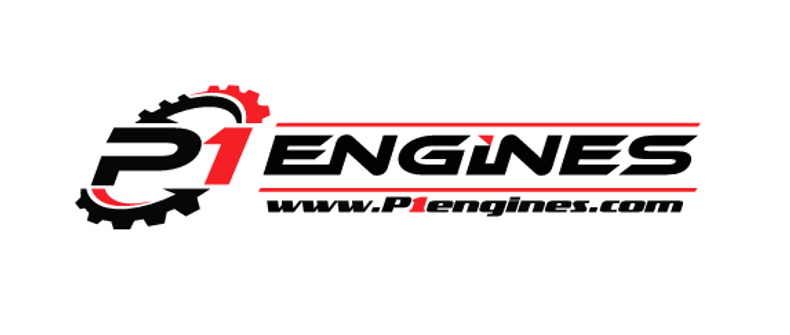This Iame KA100 Tuning Tip Guide was supplied by P1 Engines INC. P1 Engines is an established and respected 2 stroke engine builder focusing on kart specific powerplants. You can visit their website at, https://p1engines.com/.
The basics first. With any items when it comes to engines and what is either better or legal, you must check with your sanctioning or governing kart body for the current rules. There maybe variations in this guide that differ from the current rule set you are competing under.
- Spark Plug - NGK BR10EG 3993
- Gap - 0.030" - 0.035" - Do not over gap the plug
- If you drop a spark plug or the engine gets ran over in an incident, change the plug.
- Fuel - Do Not Use Pump Fuel. Sunoco 112 or VP 110 is a common karting fuel.
- Do not use oxygenated fuels
- Oil - As of 2025 - 1 5 Gallon Pail of Race Fuel to 32oz Bottle of Oil - Roughly 6.5 oz per gallon
- SKUSA - ELF HTX 909
- COTA - Motul Kart Grand Prix
- USPKS - ELF HTX 909
- Tillotson HW-33A
- Carburetor Rebuild Interval - 2-3 hours of run time
- P1 Engiens recommends using an external fuel filter between the gas tank and the carburetor.
- Low Speed Needle - Closest to the reed cage or intake manifold
- 1 Turn Out
- High Speed Neelde - Closest to the air box or air filter
- 1 1/8 to 1 Turn Out
- Tune within the above range. If you are out of this range, inspect and rebuild the carburetor or send to your engine builder for service.
- Some Tuners use minutes, which is the same layout as manual clock hands.
- 1 and 15 minutes is 1 Turn Out plus and additional 1/4 Turn out.
- Inspect the reeds every 2-3 hours of run time
- Clean air filter every 2-3 days of track time. Sandy and dusty conditions will require higher frequency
- Have a few filters in rotation to make it easier
- Always double check the throttle stop and the
- Always double check your throttle stop and proper throttle cable adjustment so you don't over torque the carburetor arm - Video Coming Soon
- Check the clutch and front driver gear every 2-3 hours
The big question everyone always asks and then they want to argue with the answer
Don't be an AskHole!!!
What's an Askhole?
An askhole is someone that asks a question and won't accept the answer. Then they walk around the pits for 1.5 hours asking everyone else the same question until they find the answer that they want to hear.
So, back to the topic at hand, the question everyone asks for any engine, for any series, for any style of racing.
How many hours can I run the top end ( usually the piston and ring wear ) for?
P1 recommends 8 - 10 hours on a top end
- This service usually entails a new piston, ring (s), upper bearing, wrist pin, cylinder base gasket, cylinder head gasket or o-ring, and a carburetor rebuild.
How many hours can I run before doing a lower end service?
P1 recommends 16 - 20 hours on a lower end engine service.
- This service usually entails a new top end, see above, plus inspection of the crankshaft and rod, replacing as needed, replacing the lower rod bearing, main bearings, seals, crank pin, reed cage gaskets, reeds, and checking the starter for operation.
Now, for the fun part. If you run pump fuel, low quality 2 stroke oil, overheat the engine, oxygenated fuels or addititives, toss the chains, bending axles, or any other form of excessive wear and tear on a racing engine, you will decrease the rebuild intervals.
If you drive a SuperCar and brag about how fast your street car is, then you are likely 20% or more off of a respectable lap time, then you can increase your engine service intervals because the engine is being less abused than a break in session.
FINE PRINT (The above is the opinion of Extra Kart Parts, and not P1 Engines. )
Back to the technical information.
- JR Headers - Clean or de carbon every 2-3 hours. Cleaning does not mean aggressive abrasive to alter the Jr Header restrictor measurements or contour.
- Senior RPM Range - Normal baseline conditions -7,500 to 16,000 RPM's ( look at the data graph, not Max Recall )
- Junior RPM Range - Normal baseline conditions -7,500 to 14,500 RPM's ( look at the data graph, not Max Recall )
- EGT Range
- Minum range is 800 - 900 degrees farhanheit
- Throttle release and application will affect this number.
- Slow roll on throttle or coasting will show lower EGT numbers
- Early throttle application and maxium use of straight away will show higher EGT numbers
- P1 Engines recommends scrolling through the data graph and looking at EGT temps at 14,000 RPMS
- EGT Numbers are only a baseline and help with tuning. There are many factors that affect the final EGT number
- Chassis or Tire Condition or Handling ( Overstuck vs Loose )
- Driver Agressiveness
- Fuel, oil, and additives
- Track conditions such as overall grip or length
- The below graph is based on the MyChron Open Tip 90 Degree EGT Sensor


